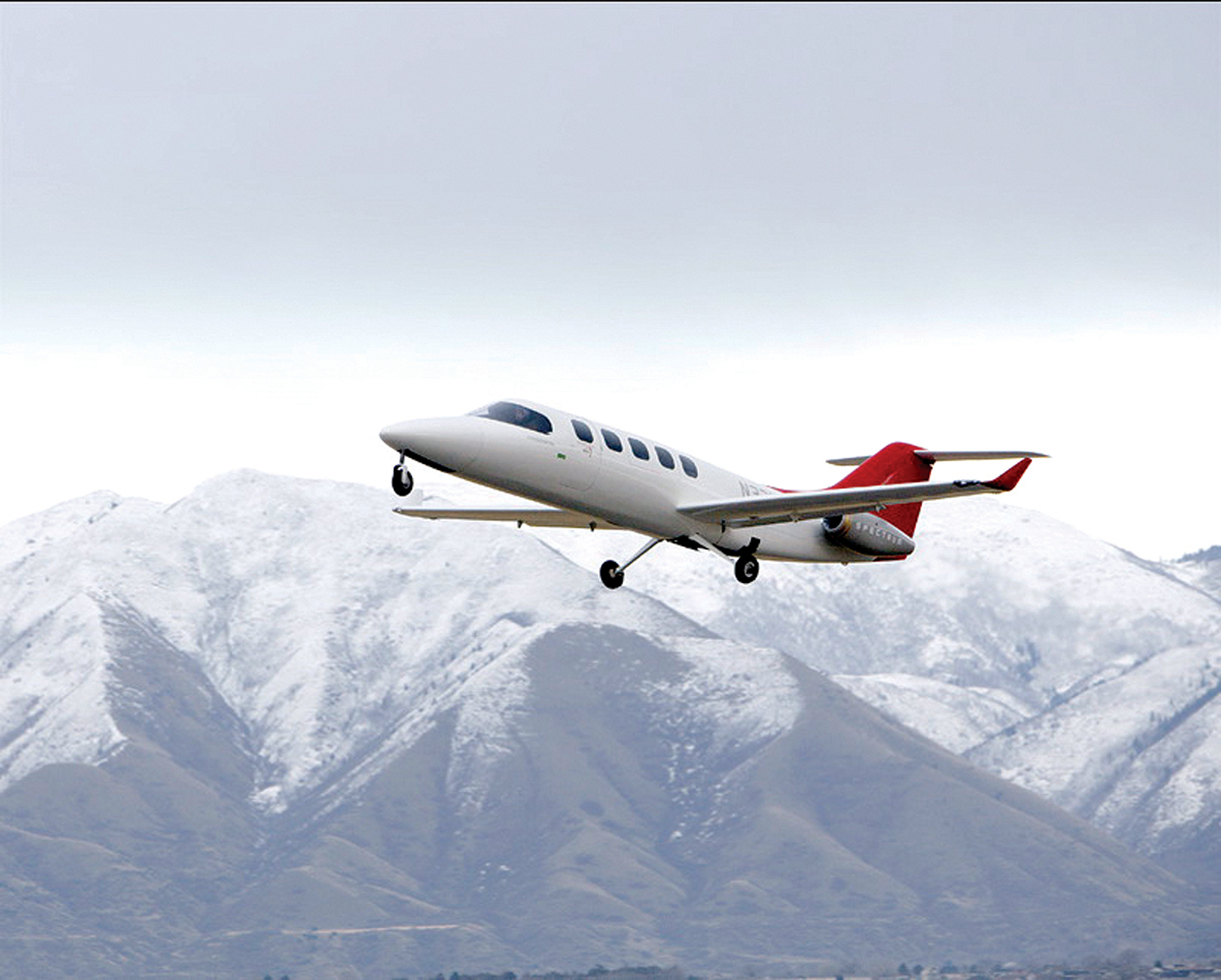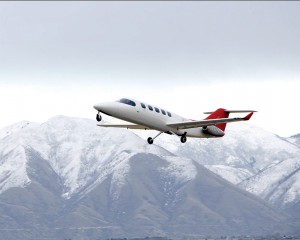The Spectrum 33 twinjet made its first flight on Saturday, Jan. 7. Spectrum Aeronautical, LLC built the new light business jet using a next-generation, carbon-graphite construction process. That process gives the aircraft virtually the same size cabin as the most popular, current-production, eight- to nine-seat light business jets, but at a substantially lighter weight.
The Spectrum 33 is designed to cruise at up to 415 knots (477 mph) and fly as far as 2,000 nautical miles. Notably, it will consume half as much fuel as current-production aircraft with the same cabin, range and speed.
“This marks an important point in our development program,” said Linden Blue, founder and CEO of Spectrum Aeronautical. “Weight reduction is key to boosting fuel efficiency and lowering operating costs. The first flight of Spectrum 33 is a testament to the dedication and hard work put in by an extremely talented team.”
The aircraft was built by a Spectrum Aeronautical and Rocky Mountain Composites joint-design team at RMC’s plant at Spanish Fork-Springville Airport (U77), about eight miles southeast of Provo, Utah. The Spectrum 33 soared off Spanish Fork’s relatively short, 4,500-foot elevation runway in about 750 foot on its first flight, even though it was using greatly reduced takeoff thrust. It was then repositioned to Provo Municipal Airport (PVU), a landing facility with a considerably longer runway.
William “Bill” Davies, Spectrum’s chief of flight test, and Ian Hollingsworth, another veteran test pilot, were at the controls.
“The acceleration and climb performance of the 33 is remarkable,” Davies said. “It has excellent takeoff and landing characteristics.”
He said the aircraft performed as expected, but that pitch control wasn’t optimum. As a result, Spectrum’s engineers modified the aircraft’s flight control system to increase pitch control authority at higher speeds.
Davies and Hollingsworth resumed testing in late January, after two frustrating days of waiting out snow and rain. The result was two “perfect flights” on Jan. 31, totaling just under an hour, which took advantage of breaks in the weather.
“Bill and Ian concluded all items on their test cards and were delighted with the responsiveness and controllability of the airplane,” Blue said. “The problem of positioning of the stabilator stops from the first flight was eliminated. What we know about the airplane now is that our weight projections appear to be valid and our projected docile handling characteristics, including normal landing approach speeds of 85 to 95 knots, appear realistic. We also know it takes off short and wants to climb and fly much faster than we are letting it–for the moment.”
Blue said the airplane rotates easily and now has plenty of nose-down control authority.
“It’s easy to fly and easy to land and the nose gear stays up nicely until the pilot puts it down,” he said. “Of course, this is only the beginning of expanding our flight envelope, but we’re off to a very promising start.”
Craig Simpson, president of RMC, said the firm’s fibeXtm material and the processes used to build the aircraft “represent a major leap forward in aircraft structures technology, compared to conventional aluminum airframes and existing composite techniques.” Larry Ashton, RMC’s chairman, pioneered the fibeXtm process.
Once comprehensive testing of the current proof-of-concept aircraft is complete, Spectrum Aeronautical will freeze the design and build production conforming flight test aircraft to be used for certification testing. FAA type certification of the Spectrum 33 is slated for late 2007 or in 2008.
To follow the progress of Spectrum 33 development, visit [http://www.spectrum.aero].












